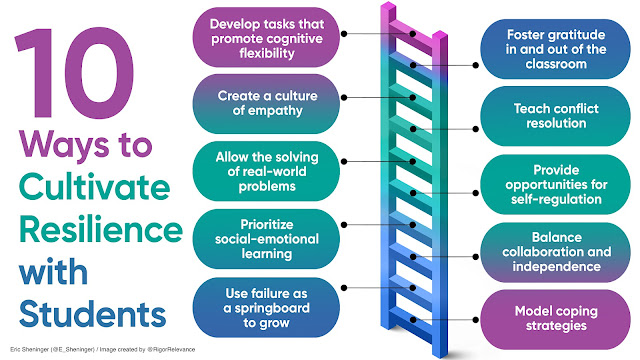The pandemic leveled down an array of lessons that should pave the way for future success. One that sticks out to me as the most critical is how resilience got us through one of the most disruptive events we have ever experienced. Adversity, like never before, compelled us to not only change but also to persevere in the face of countless unknowns. While the path was fraught with obstacles, we learned to overcome them together through innovative means. Herein lies the essence of reliance and how important it is in a world that will only become more disruptive.
Since the impact of this quality is relatively straightforward, it is critical that schools cultivate it in learners of today and tomorrow. Marilyn Price Mitchell shared the following in an article for Edutopia:
Research has since established resilience as essential for human thriving and an ability necessary for the development of healthy, adaptable young people. It's what enables children to emerge from challenging experiences with a positive sense of themselves and their futures. Children who develop resilience are better able to face disappointment, learn from failure, cope with loss, and adapt to change. We recognize resilience in children when we observe their determination, grit, and perseverance to tackle problems and cope with the emotional challenges of school and life.
Here are some ways to develop resilience in learners:
- Develop tasks that promote cognitive flexibility
- Create a culture of empathy
- Allow the solving of real-world problems
- Prioritize social-emotional learning
- Use failure as a springboard to grow
- Foster gratitude in and out of the classroom
- Teach conflict resolution
- Provide opportunities for self-regulation
- Balance collaboration and independence
- Model coping strategies
One of the best ways to develop resilience in learners is to empower them to be disruptive thinkers, which I define as the ability to replace conventional ideas with innovative solutions to authentic problems. An array of strategies can be used, such as problem and project-based learning, performance tasks, personalization, independent open courseware studies, internships, and capstone experiences. While these ideas represent larger endeavors, resilience can be nurtured every day in the classroom using two means that I discuss in detail in Disruptive Thinking in Our Classrooms:
- Moving to Quad D using the Relevant Thinking Framework
- Getting students into the learning pit
The images above illustrate how lesson components such as questions, tasks, and assessments can be constructed in ways to develop resilience in all learners. Ultimately, they will be better equipped to deal with disruptive forces that are sure to materialize.



No comments:
Post a Comment